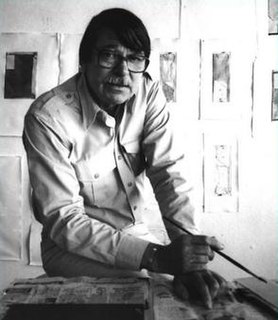Top 33 Quotes & Sayings by Richard Diebenkorn
Explore popular quotes and sayings by an American artist Richard Diebenkorn.
Last updated on April 18, 2025.
All paintings start out of a mood, out of a relationship with things or people, out of a complete visual impression. To call this expression abstract seems to me often to confuse the issue. Abstract means literally to draw from or separate. In this sense every artist is abstract . . . a realistic or non-objective approach makes no difference. The result is what counts.
























